AMD Announces Ryzen 5000 Mobile 'Cezanne' Processors, Zen 3 and Overclocking Comes to Laptops
Dialing up the performance
AMD CEO Dr. Lisa Su took to the stage at the virtual CES 2021 to announce new 'Cezanne' Ryzen 5000 Mobile processors that bring the powerful Zen 3 architecture to the notebook market for the first time, opening the door for the company to finally have a larger presence in the highest-end gaming notebooks. That means that we'll finally see AMD's chips paired with the highest-end mobile GPUs when the new Ryzen 5000 Mobile processors come to market in February, which could shake up our Best Gaming Laptops rankings.
AMD says the new chips set the new standard for battery life in x86 notebooks and remain the only 8-core x86 chips for ultrathin laptops. The 13 new processors span from low-power 15W chips up to two new 45W+ HX-series models designed to bring desktop PC-like gaming performance to notebooks. These eight-core HX models carve out a new high-performance niche by bringing CPU, memory, and fabric overclocking to AMD-powered notebooks for the first time.
AMD also expanded its HS series with four flagship chips that slot in with boost clock speeds that stretch up to 4.8 GHz within the 35W TDP envelope. Two new 45W H-series models, which come in both six- and eight-core flavors, are trailed by five U-series processors.
AMD also conducted a demo of its RDNA2 mobile graphics cards that will come to market in the first half of this year. They'll be accompanied by unspecified new RDNA2 cards for the desktop PC. But first, let's take a look at the mobile CPUs.

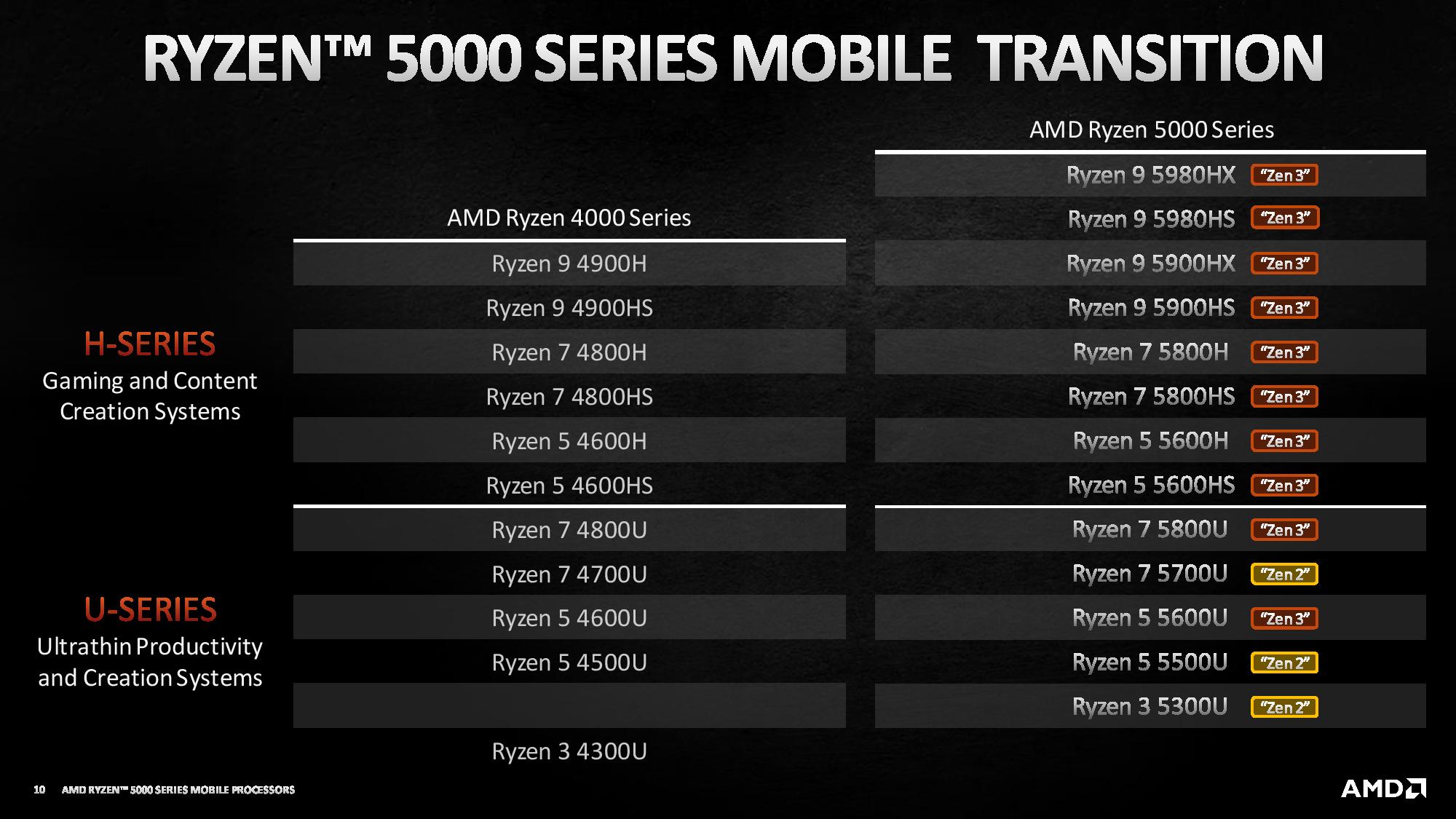
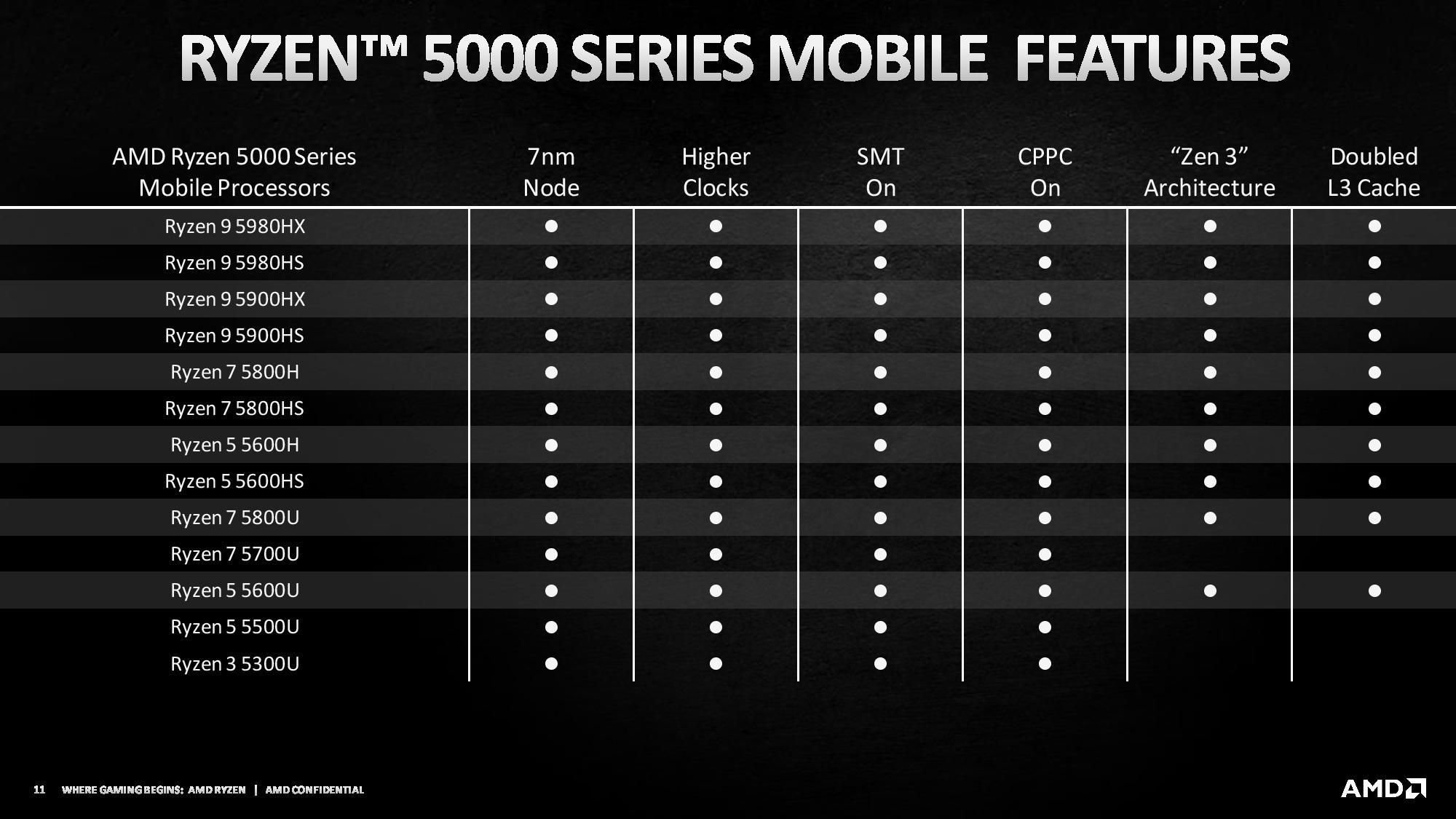
The Ryzen 5000 mobile processors all come with threading enabled, higher boost clocks than the previous-gen, and support CPPC (Collaborative Power and Performance Control) technology. This is the same thread-targeting feature present in the Ryzen 3000 and 5000 desktop CPUs, but now it's debuting in AMD-powered laptops. Ultimately, this allows for tighter performance and power control, resulting in higher boost clocks on the fastest cores and extends battery life.
While we have detailed clock speeds and other particulars for the CPU portion of the SoCs, we do know the chips come with the same enhanced 7nm Vega architecture as the previous-gen Ryzen 4000 models (not the company's newest Navi engine). AMD says the units have seen 'double-digit increases' due to higher frequencies, precise clock selection, better power state management, and the increased performance of the Zen 3 CPU cores.
AMD's 7nm Radeon Vega graphics engine touts up to 59% more performance per CU (compute unit) than the first-gen 14nm Vega, which previously allowed the company to use 8 CUs instead of 11. We don't know any other details about the integrated graphics engine, like the graphics clock rates or core (CU) counts for the various SKUs, but AMD says it will share more info in technical briefings as we come closer to the launch next month.
Get Tom's Hardware's best news and in-depth reviews, straight to your inbox.
AMD recently chose to unify its Ryzen Mobile branding under the same Ryzen 5000 umbrella as its desktop chips, clearing up the confusion with the Ryzen 4000 series processors that came with an older architecture than desktop Ryzen 3000 models. However, AMD also sprinkled in three Zen 2 chips in the Ryzen 5000 Mobile stack. AMD says this approach meets specific pricing criteria and customer (OEM) demand on the lower end of its product stack. As seen in the second slide, these Zen 2-powered Ryzen 3, 5, and 7 models slot into the lowest-end 15W U-series category, muddying the branding for value seekers.
AMD U-Series Ryzen 5000 Mobile
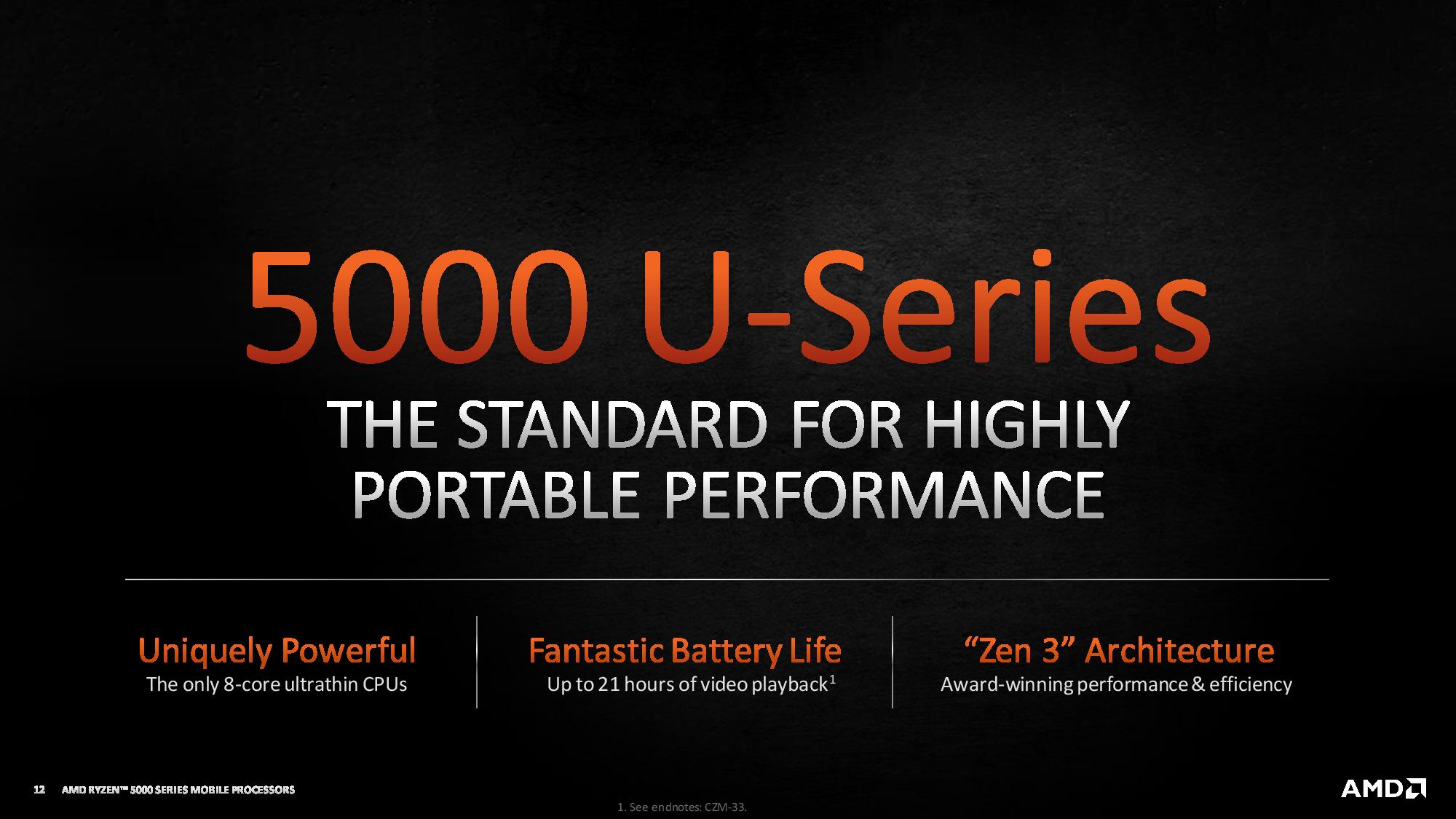
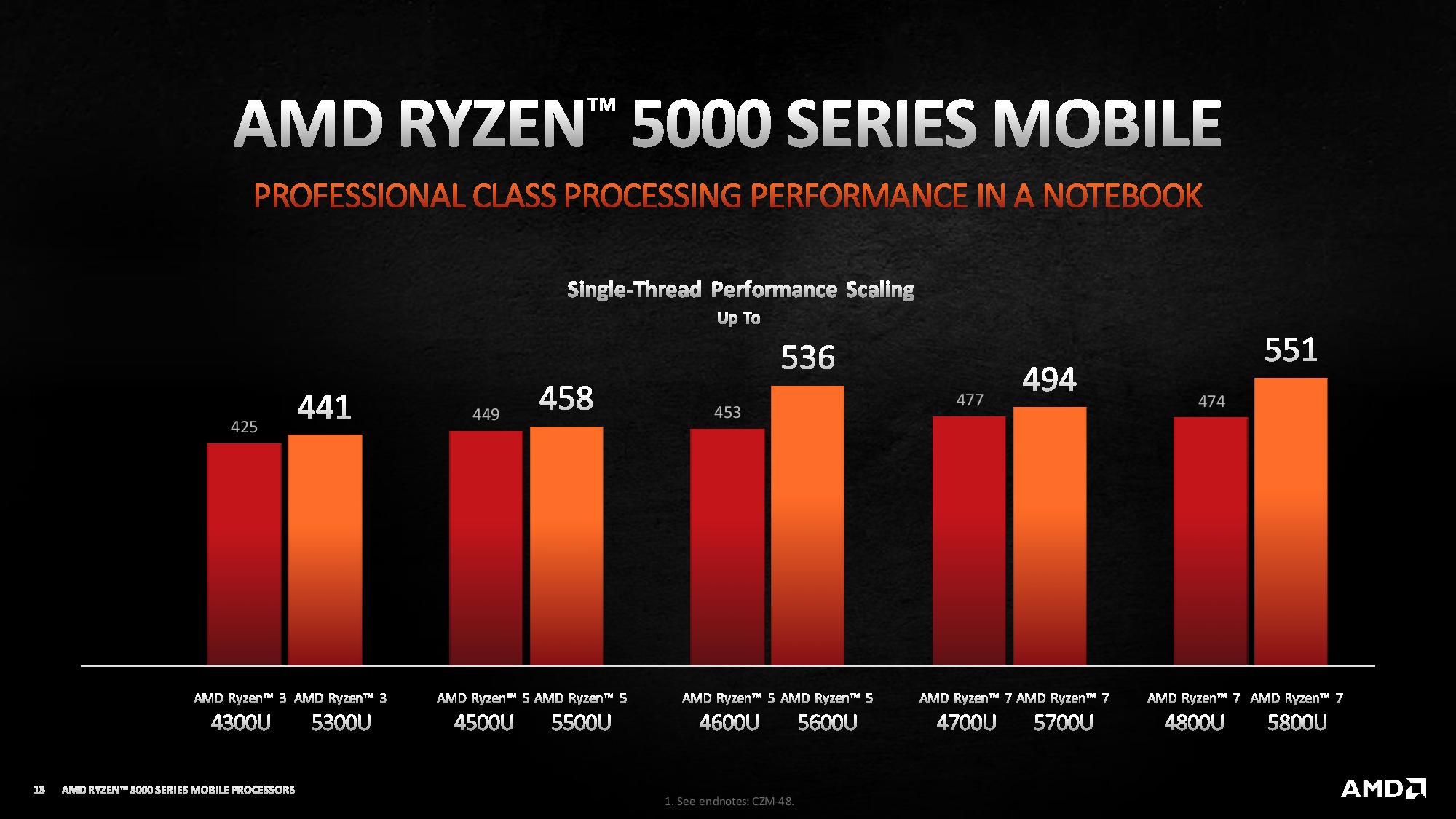
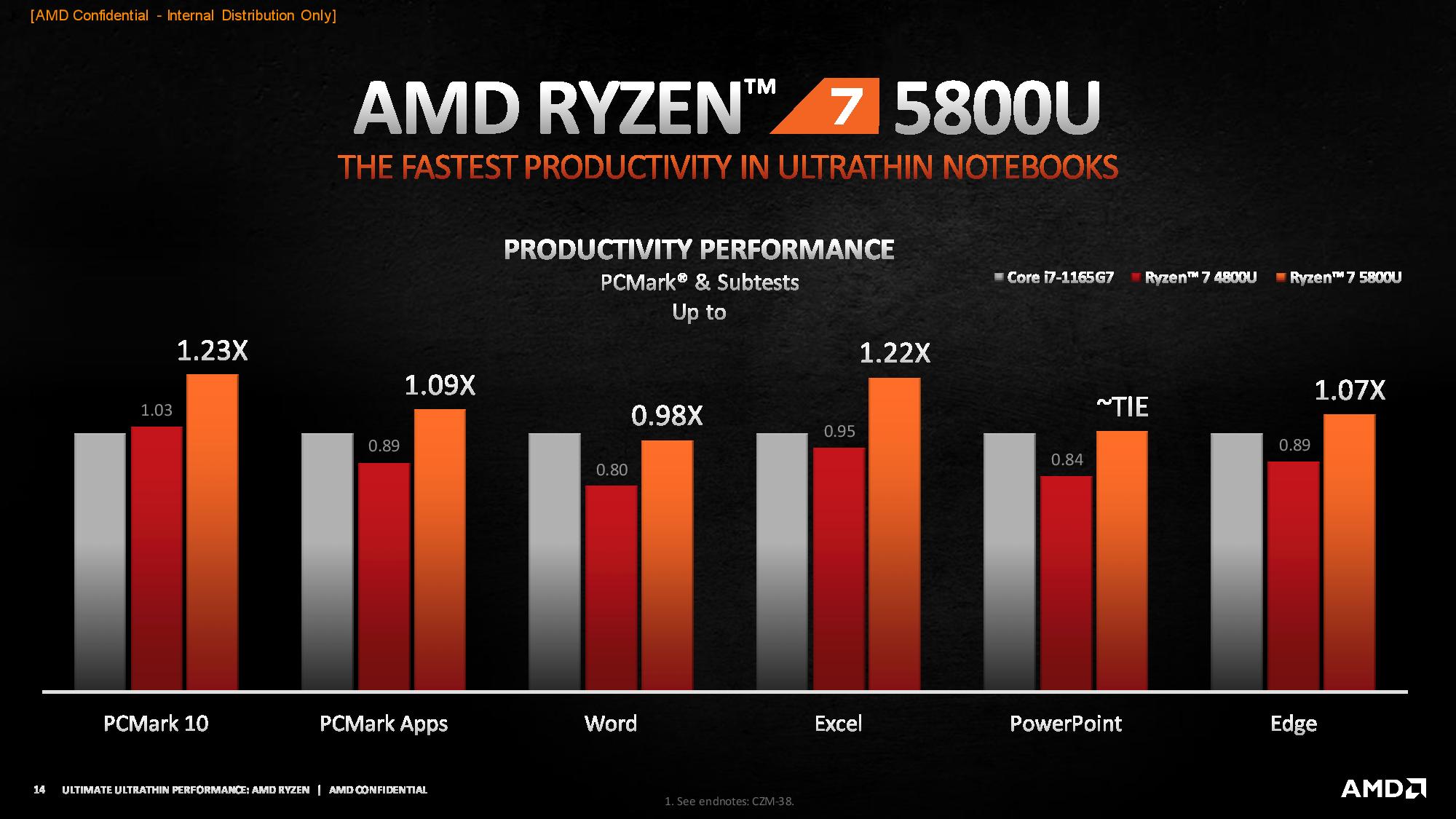
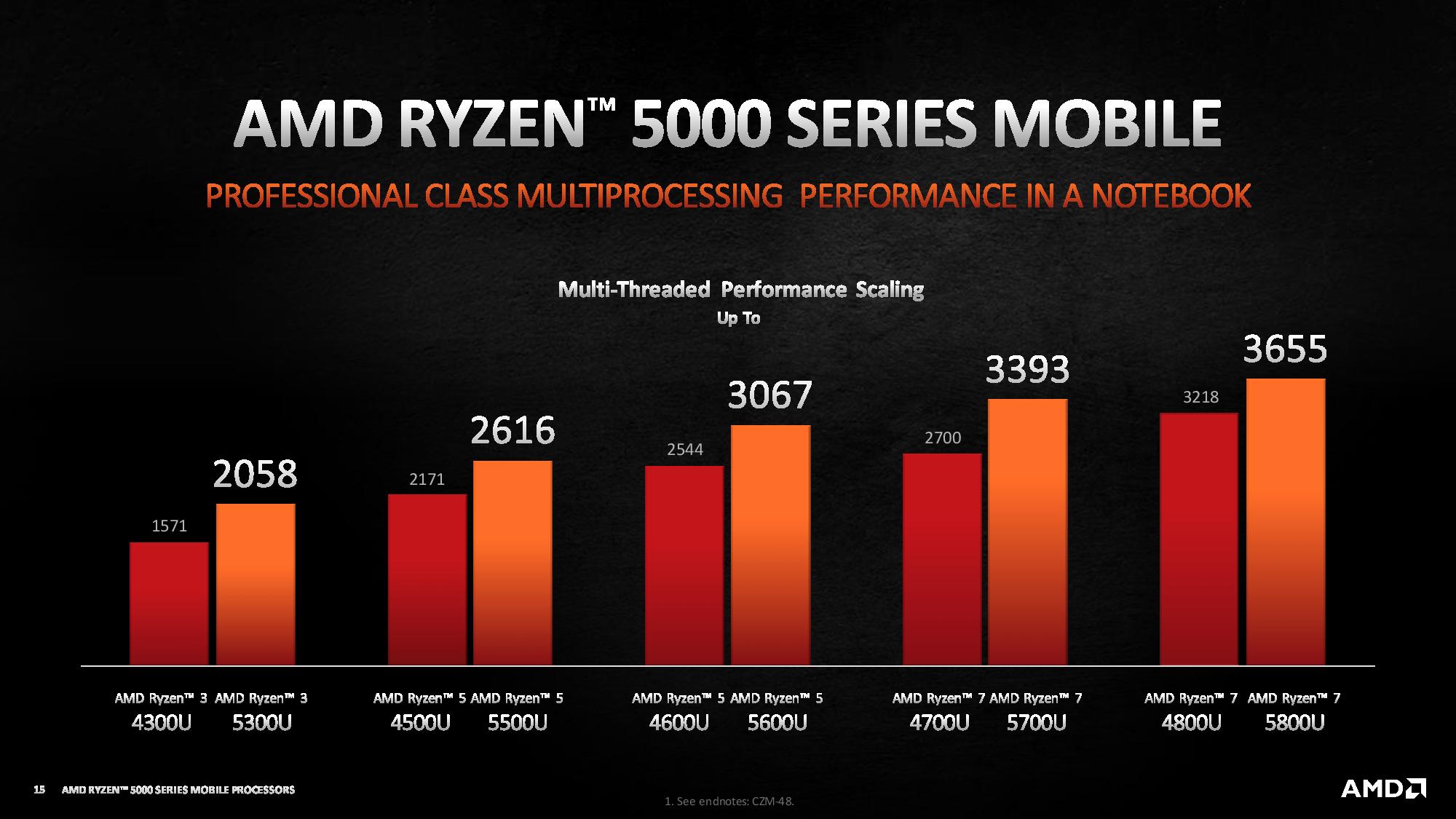
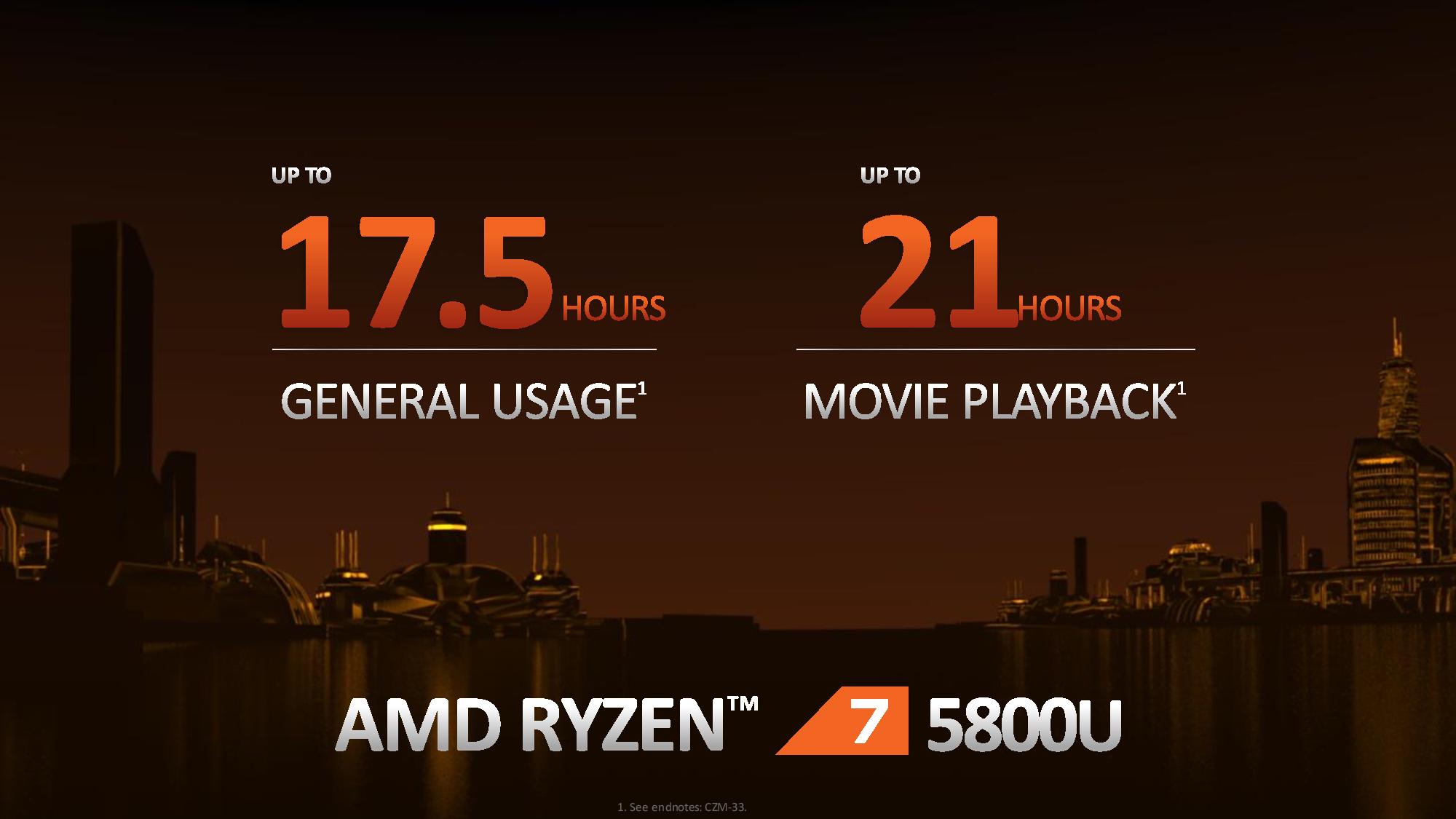
AMD shared a series of head-to-head benchmarks, but as with all vendor benchmarks, we should take them with a grain of salt.
AMD's 15W U-series includes the Zen 2-powered Ryzen 7 5700U, Ryzen 5 3500U, and 5500U, but as you can see, they outperform their previous-gen Zen 2 equivalents in the Cinebench R20 multi-threaded test (as listed in the test notes). However, this test result is a bit unclear as it appears that AMD has used a multi-threaded metric to derive a single-threaded performance rating.
The PCMark 10 tests are a bit more definitive. The 15W Ryzen 7 5800U outperforms the previous-gen Ryzen 7 4800U easily and notches substantial wins over Intel's four-core eight-thread Core i7-1165G7. Intel's processor has a 12W to 28W TDP range, and it's unclear if it was set to the maximum settings in these tests.
AMD says the Ryzen 7 5800U offers up to 17.5 hours of battery life during general usage and up to 21 hours of battery life during video playback, both of which are the longest in the ultrathin category.
AMD HS-Series Ryzen 5000 Mobile
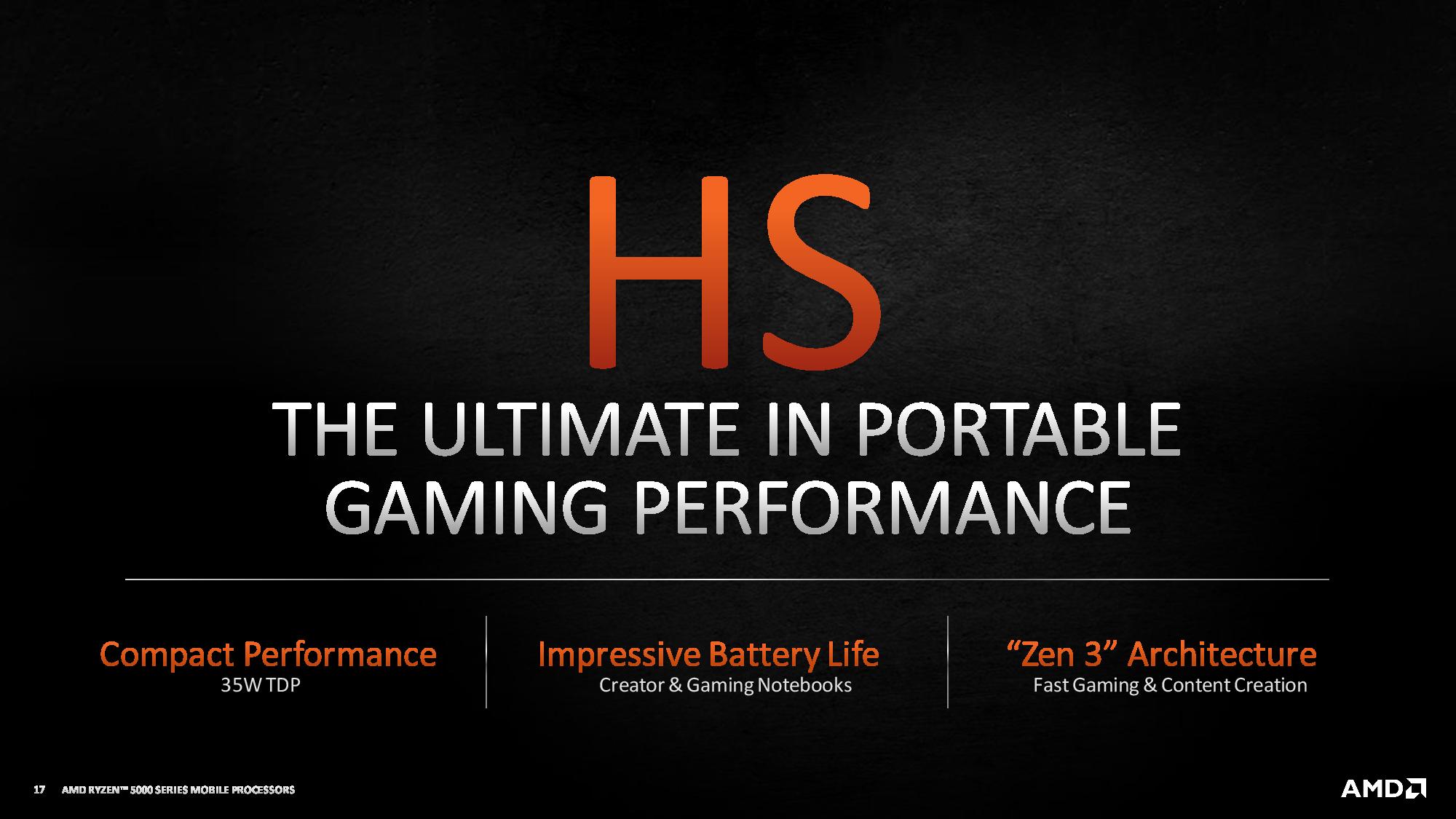
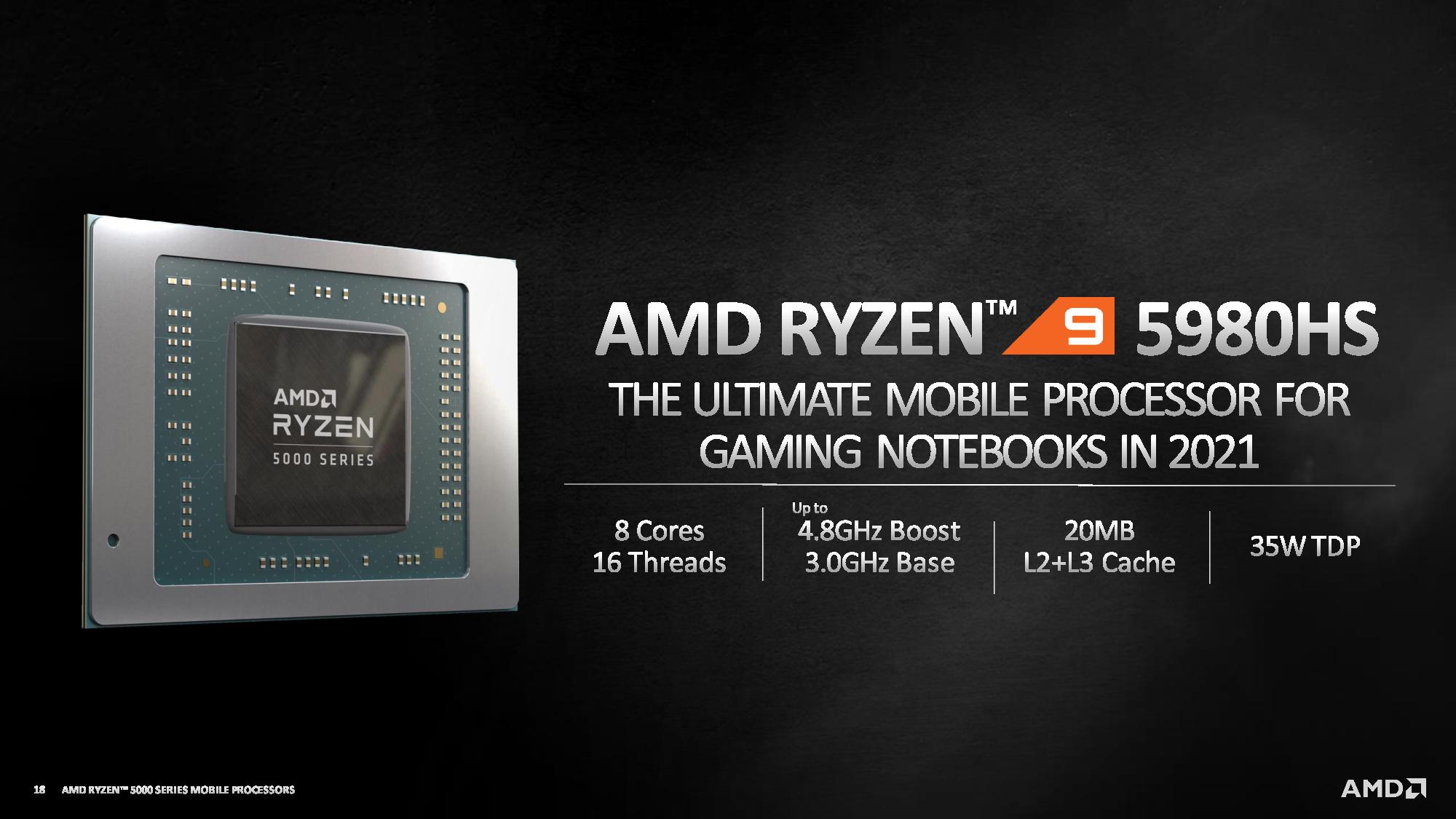
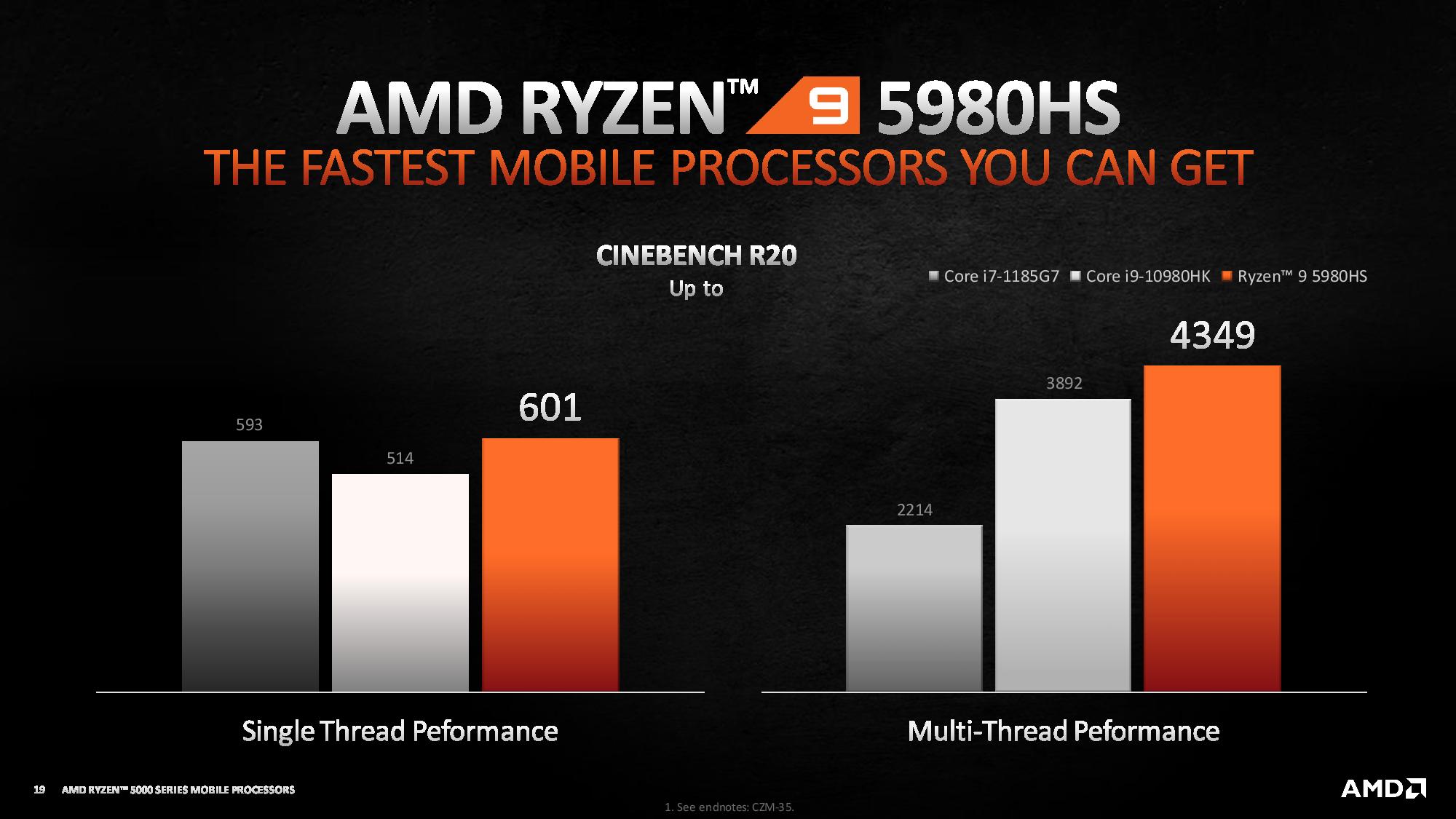
AMD's 35W HS-Series processors are geared toward compact notebooks, and the flagship Ryzen 9 5980HS comes armed with four cores and eight threads that operate at a 3.0 GHz base and 4.8 GHz boost frequency — the highest of the Ryzen 5000 Mobile series. AMD's benchmarks show the chip beating the eight-core 16-thread Intel Core i9-10980HK by ~1% in the single-threaded Cinebench R20 benchmark, and ~11% in the multi-threaded test.
AMD HX-Series Ryzen 5000 Mobile
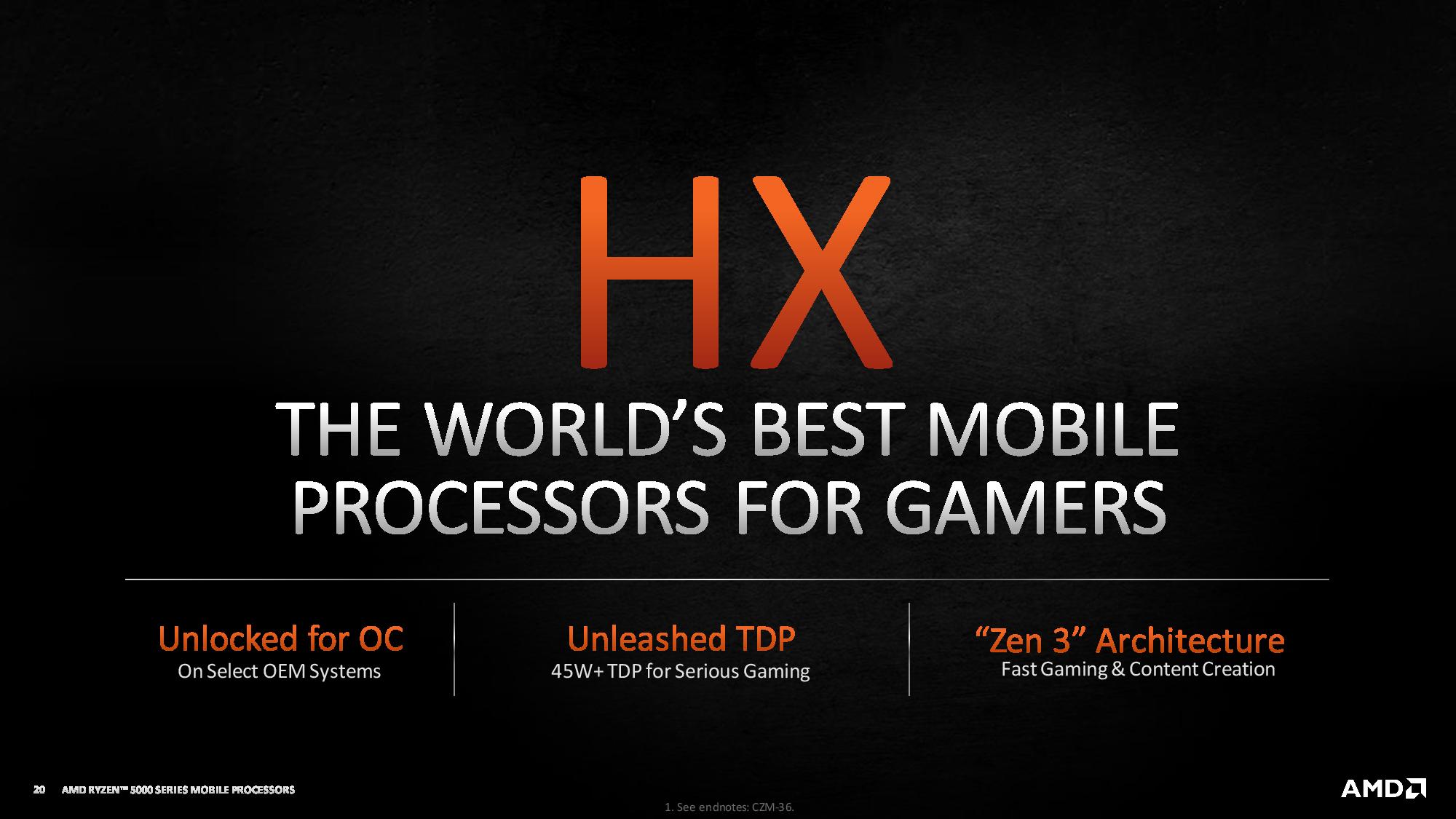
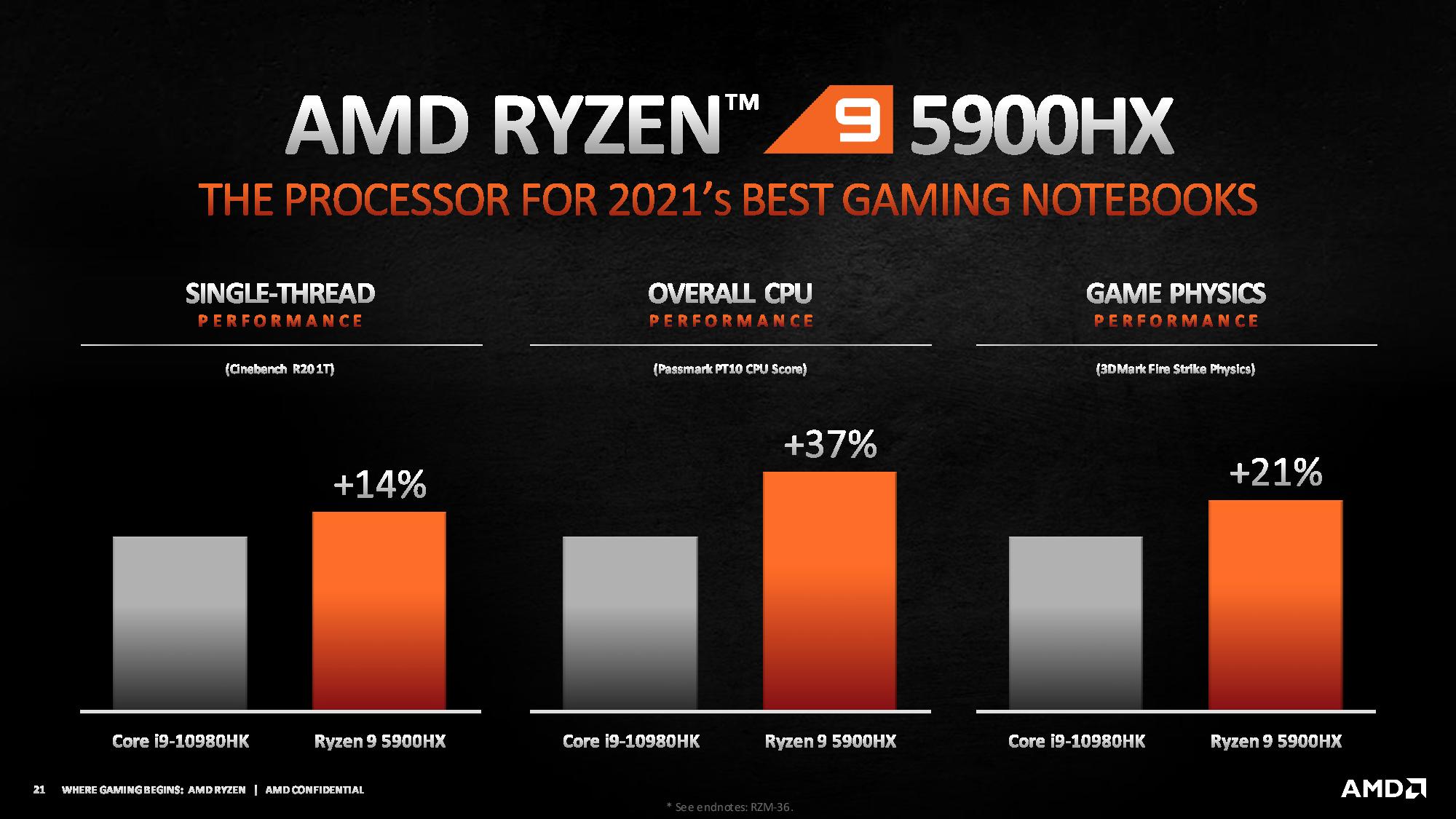
AMD shared a few benchmark comparisons of its highest-end overclockable Cezanne chip, the 45W Ryzen 9 5900HX, against Intel's 45W Core i9-10900HK in a battle of the highest-end chips in both chipmakers' stables. AMD claims a 14% advantage in single-threaded performance measured by Cinebench R20, a 37% advantage in overall performance as measured by Passmark PT10, and a 21% game physics advantage in the Fire Strike Physics benchmark. How that translatest to actual games is another matter.
Thoughts
AMD's Ryzen 4000 series mobile processors have already taken the notebook market by storm, granting the company its biggest slice of the mobile market in history, and the Ryzen 5000 Mobile chips look to continue that momentum. AMD pulled off this feat in record time — the Raven Ridge chips didn't come to the mobile market for a year after debuting on the desktop, while this Zen 3 transition should take roughly four months.
Speaking of Raven Ridge, those chips came to market in 75 designs, while the next-gen Ryzen 4000 chips landed in 100 devices. AMD expects Ryzen 5000 to land in over 150 notebooks by the end of the year, many with the highest-end graphics cards, a distinction that has long eluded the company.
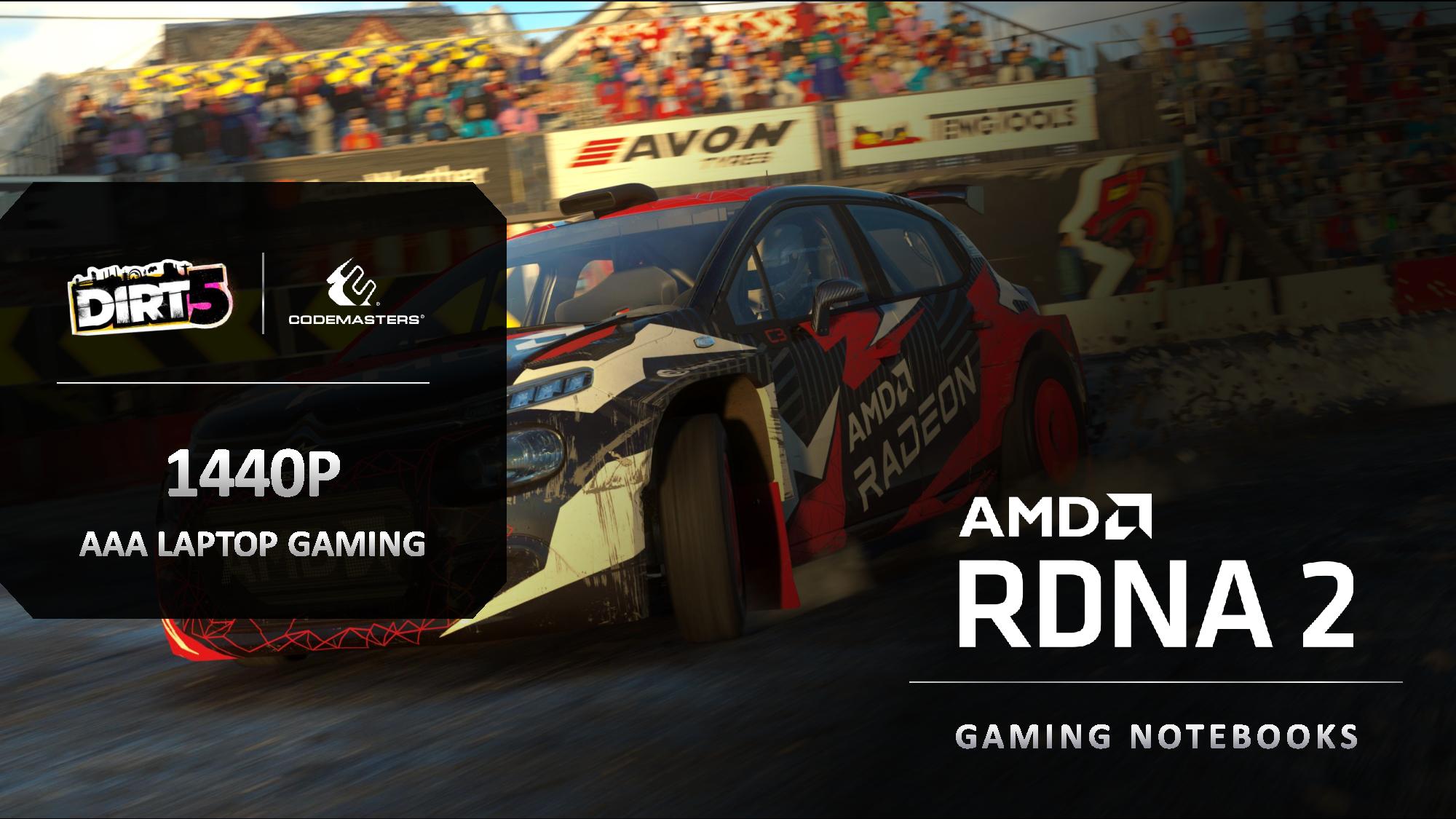
AMD has its own higher-end discrete mobile graphics cards coming, too. The company demoed an RDNA2 GPU running at over 60 fps in Dirt 5 at the 1440p resolution. The RDNA2 mobile graphics cards will come to market in the first half of this year. AMD also says that new RDNA2 graphics cards for the desktop PC will also land in the first half, but didn't share any further detail.
Based on what we know about RDNA2 GPUs, these mobile chips are most likely unannounced Navi 22 or Navi 23 parts. Navi 21 goes in the current RX 6900 XT, 6800 XT, and 6800, but it can be quite power hungry and is a large 520mm2 chip. We expect AMD will have RX 6700 XT and RX 6700 cards in the near future, which will use less power. Mobile optimized versions of these would be the logical choice for gaming laptops.
We'll have to wait to see how the Ryzen 5000 Mobile chips perform in real-world testing, and we're particularly eager to see how the 7nm Radeon Vega graphics engine performs in tandem with the Zen 3 CPU cores. It won't be long before we learn more about the chips — AMD says it will share more details before they come to market in February.

Paul Alcorn is the Editor-in-Chief for Tom's Hardware US. He also writes news and reviews on CPUs, storage, and enterprise hardware.
-
Giroro I tried to watch this presentation on YouTube, but it made me too anxious. They hard-cut every breath and pause. It was like a single 52 minute run-on sentence.Reply
Did Eminem edit this press conference?
